#shophouse singapore
Text
Shophouses are iconic features of Singapore’s architectural landscape, representing the city’s history, roots, and multicultural heritage. Although there is a limited supply due to modernisation, shophouses for sale remain in high demand, particularly among local and foreign investors.
Indeed, shophouses resemble asset classes rather than just structural investments for HNWIs (High Net Worth Individuals), and the prestige of ownership is comparable to that of valuable fine art and luxury watches.
Choosing the right type of shophouse and its unique characteristics is helpful if you're considering investing in one in Singapore. In this article, we examine the history and distinctive features of the various styles of shophouses for sale in Singapore.
1 note
·
View note
Text
Kaffir Street Tour
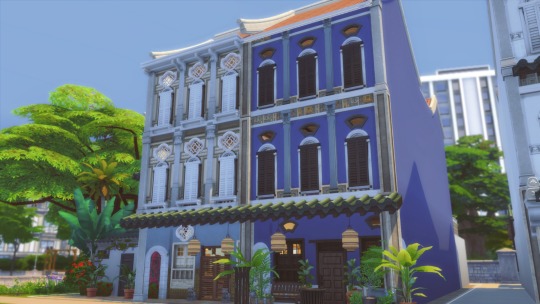
This stretch of Shophouses, located at Kaffir Street, are typical of the many homes of the rich merchant classes in colonial Singapore (1819-1941). Shophouses in a way, are a condensed expression of the sprawling Chinese courtyard estate known as the Siheyuan. Shophouses, however, are multi storey, built wall to wall, opening to the street, and often have ornate, colourful facades, showcasing the best of regional craftsmen who worked with plaster, porcelain and wood carving to create the iconic Shophouse fronts, often festooned with mythological friezes, auspicious symbols and art.

While called shophouses, many were in fact purely residential, and are more or less townhouses. The front, ground floor of the Shophouse features a sheltered corridor that links the shophouses together, known as the Five foot way. These walkways served as a way for pedestrians to stay out of the rain and sun, and in quieter residential areas, also doubled as a kind of verandah.

The entrance to the home leads to the main reception room, where guests and business associates are recieved and entertained. The standard layout for this room features a central round table with stools or chairs, and with traditional Chinese hardwood chairs flanking the walls on either side. This is typical of a Chinese style reception hall where guests sit side by side, with chairs divided by side tables.

The reception hall is decorated with the very best objects and art to showcase the household's refinement and values, or portraits of the family's many predecessors, to highlight the family's lineage. The more domestic hind quarters of the home are separated from the more businessy reception hall by a large, ornate wooden screen, in front of which is usually the family's altar.
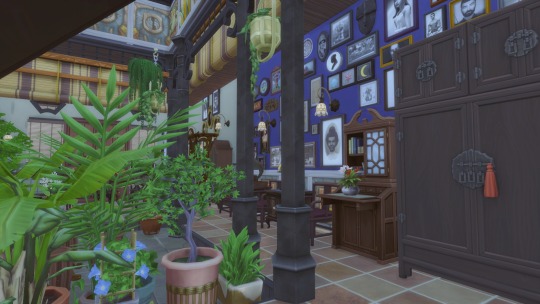
Beyond the divider screen lies the heart of the home, the courtyard. Due to a tax imposed on the width of a house, shophouses became fairly narrow, but were very deep. The courtyard, or airwell, was an important feature to allow light and air into the deep recesses of the home, and served as a form of air conditioning, helping to cool the interiors by circulating air.
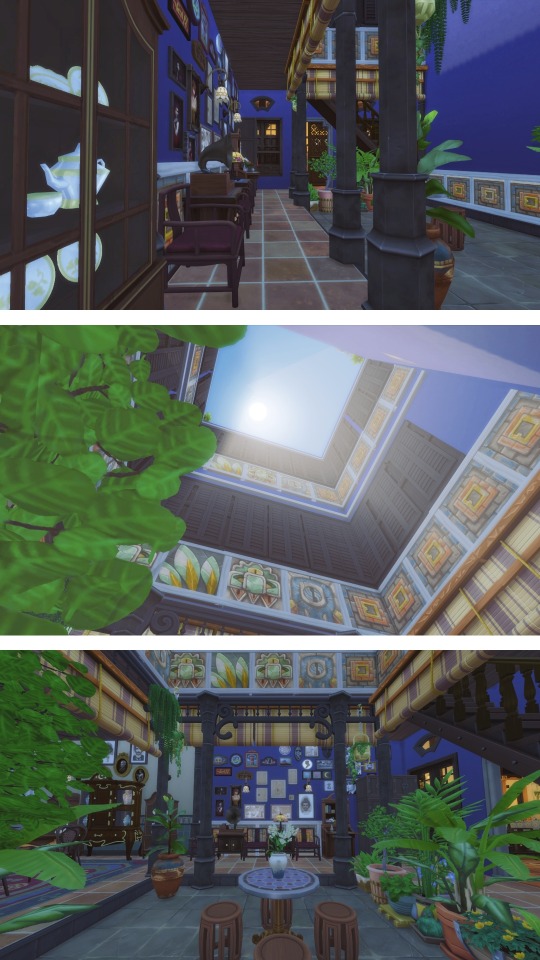
In many homes, it became a living and dining area, where more intimate guests were invited to join in family meals. The courtyard is also where the main, or only staircase is located. Because of water's symbolism in Chinese culture for wealth and abundance, the courtyard is also an important symbolic feature, where rainwater pools, symbolising the accumulation of wealth for the home. The rainwater is also collected and used for washing. It was also important to have plants and nature in the courtyard, better still, symbolically significant plants.

While many inhabitants of the Shophouse were Chinese or Peranakan, and the home is laced with Chinese sensibilities, symbolism and aesthetics, the Shophouse at its peak, was essentially a Victorian/Edwardian era home. Many homes featured trendy electrical or gas light fittings, European furniture and the very latest technology of the time.
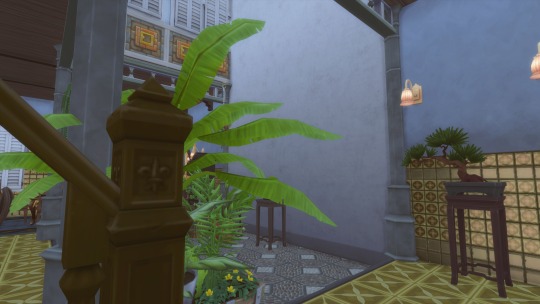
Upstairs lies the bedrooms and private spaces of the house. Typically there are several rooms that feature more traditional Chinese-style beds, that is, raised beds covered by a canopy structure. As usual, these bed chambers are covered in auspicious motifs and symbols, and are usually assigned to a newly married son and his wife, in the hopes that they may produce an heir, as many of these homes were multi-generational. In keeping with the times, however, many shophouses also had more contemporary bedrooms, done up in a more European style. Including such novelties as metal bed frames, lace, linen, European style desks and the like.
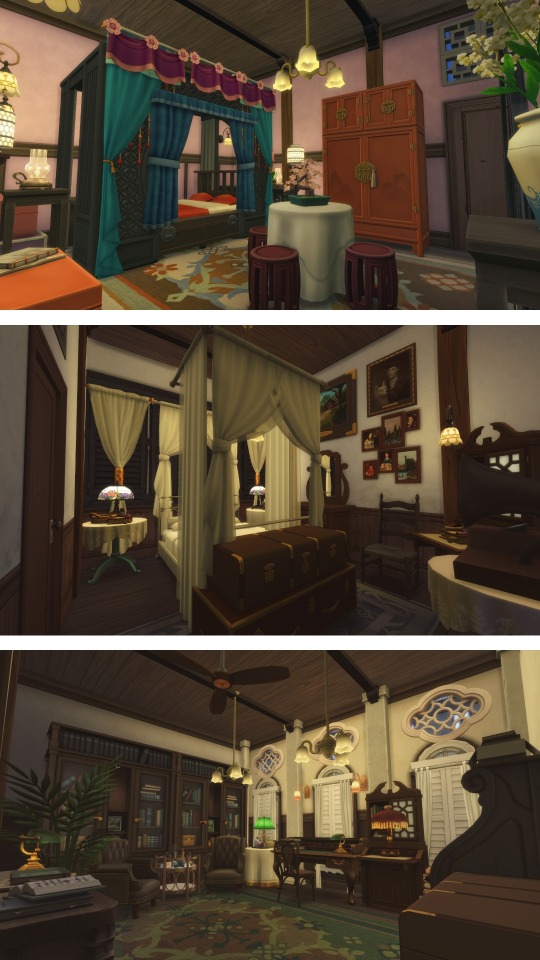
The back of the house usually features another courtyard, and a partially open air space, in which is usually built a kind of outhouse, as well as where the washing and cooking is done. Individual inhabitants of the home usually washed and performed ablutions in their rooms with tubs and chamberpots. Servants often just resided in this back portion of the house, as this is where most of their lives took place.

13 notes
·
View notes
Text
Exploring the Peranakan Culture in Singapore
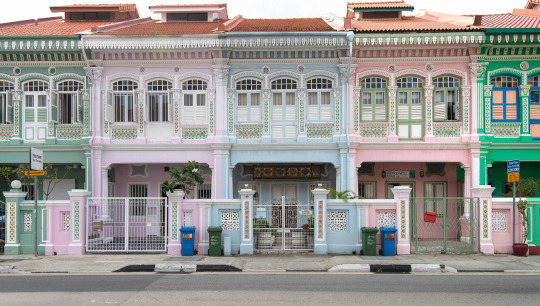
The vibrant tapestry of Singapore's cultural landscape is incomplete without the rich threads of Peranakan heritage. Just as the nocturnal Wildlife Park Singapore beckons nature enthusiasts, the term "Peranakan" refers to the descendants of Chinese immigrants who came to the Malay Archipelago, including Singapore, during the 15th to 17th centuries. This unique cultural fusion has given rise to a distinct Peranakan identity that encompasses aspects of Chinese, Malay, and Indonesian traditions. Amidst the hustle and bustle of the city, akin to the thrill of the reverse bungee in Singapore, the Peranakan culture stands as a captivating testament to the harmonious blend of diverse influences in this vibrant metropolis.
Historical Background
Early Migration: The Peranakan story begins with the migration of Chinese communities to the Malay Archipelago. These early settlers intermarried with local Malays, resulting in a harmonious blend of cultural practices.
Cultural Fusion: The Peranakan culture stands as a testament to the amalgamation of Chinese, Malay, and Indonesian influences. The fusion extends beyond mere culinary preferences, permeating every aspect of daily life.
Distinctive Peranakan Cuisine
Iconic Dishes: Peranakan cuisine, also known as Nyonya cuisine, is celebrated for its unique blend of flavors. Signature dishes like Laksa, Ayam Buah Keluak, and Kueh Dadar showcase the intricate marriage of Chinese and Malay culinary techniques.
Culinary Traditions: The preparation of Peranakan dishes involves time-honored traditions passed down through generations. The meticulous use of herbs, spices, and indigenous ingredients contributes to the unmistakable Peranakan flavor profile.
Peranakan Art and Craft
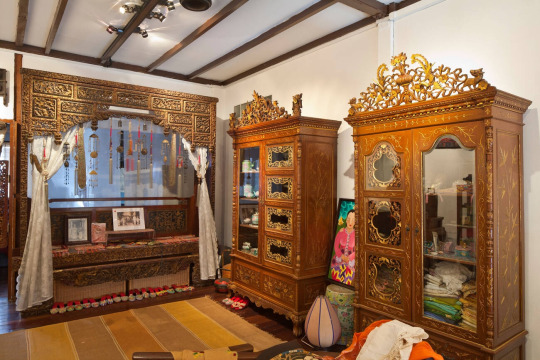
Intricate Designs: Peranakan art is characterized by intricate designs, often seen in textiles, ceramics, and architecture. These designs reflect the cultural diversity and are a visual representation of the Peranakan identity.
Symbolism in Art: Each piece of Peranakan art tells a story. The intricate patterns on porcelain, known as "straits Chinese porcelain," are laden with symbolic meanings, representing prosperity, good luck, and familial ties.
Traditional Peranakan Clothing
Sarong Kebaya: The traditional attire of Peranakan women, the Sarong Kebaya, is a graceful ensemble comprising a kebaya blouse paired with a batik sarong. This attire is a symbol of Peranakan femininity and grace.
Beaded Slippers: Completing the ensemble are beaded slippers known as "kasut manek." These meticulously crafted shoes are a hallmark of Peranakan fashion, showcasing intricate beadwork and vibrant colors.
Architecture and Heritage Homes
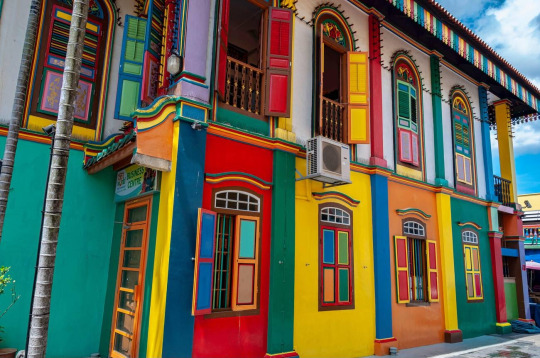
Shophouses and Their Significance: Peranakan influence is also evident in the architecture of shophouses. Elaborate facades, vibrant colors, and ceramic tiles contribute to the distinctiveness of Peranakan-style buildings.
Preserving Peranakan Heritage: Efforts to preserve Peranakan heritage include the restoration and conservation of heritage homes. These initiatives aim to maintain the authenticity of Peranakan architecture for future generations.
Language and Literature
Unique Language – Baba Malay: The Peranakan community developed its own language, known as "Baba Malay." This linguistic blend incorporates elements of Malay, Chinese, and Indonesian, further emphasizing the cultural amalgamation.
Folktales and Stories: The rich oral tradition of Peranakan culture is encapsulated in folktales and stories that have been passed down through generations. These narratives offer insights into the community's history, values, and customs.
Festivals and Celebrations
Peranakan Weddings: Peranakan weddings are elaborate affairs, blending Chinese and Malay wedding customs. Intricate ceremonies, vibrant costumes, and traditional rituals make these celebrations a unique and visually stunning experience.
Lunar New Year Celebrations: The Lunar New Year holds special significance for Peranakans. The festivities include elaborate family reunions, traditional feasts, and the iconic tossing of the yusheng for prosperity and good fortune.
Challenges in Preserving Peranakan Culture
Modernization Impact: The relentless march of modernization poses challenges to preserving Peranakan culture. Changing lifestyles, urban development, and globalization threaten to erode the distinctiveness of this unique heritage.
Efforts for Cultural Conservation: Despite challenges, various initiatives aim to safeguard Peranakan culture. Museums, cultural organizations, and community-driven projects work tirelessly to document, preserve, and celebrate the rich Peranakan legacy.
Peranakan Influence in Modern Singapore
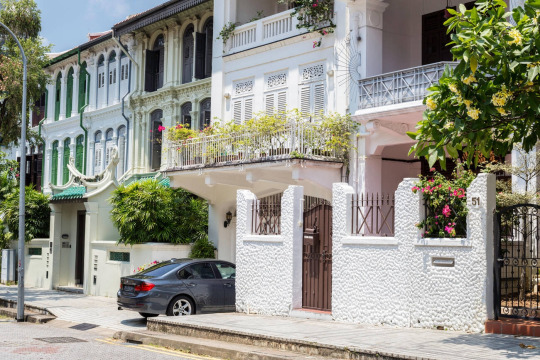
Contemporary Peranakan Culture: The Peranakan influence extends beyond traditional boundaries. Today, Peranakan culture is embraced in contemporary settings, influencing fashion, design, and culinary trends in modern Singapore.
Popular Peranakan Establishments: The popularity of Peranakan cuisine has led to the establishment of renowned Nyonya restaurants and Peranakan-inspired cafes. These establishments not only showcase the culinary heritage but also serve as hubs for cultural exchange.
Tourism and Peranakan Experience
Peranakan Museums: Museums dedicated to Peranakan culture offer visitors a deep dive into the history, art, and traditions of the community. The artifacts and exhibits serve as a testament to the resilience and vibrancy of Peranakan heritage.
Cultural Tours: Guided cultural tours provide an immersive experience, allowing visitors to explore Peranakan neighborhoods, sample authentic cuisine, and witness the living traditions that continue to thrive in the community.
Personal Narratives
Interviews with Peranakan Community Members: Personal narratives from members of the Peranakan community offer a unique perspective. Interviews highlight the challenges faced, the pride in preserving culture, and the ongoing efforts to pass down traditions to future generations.
Stories of Cultural Preservation: Heartwarming stories of individuals and communities actively engaged in preserving Peranakan culture showcase the resilience and determination to ensure that this rich heritage remains alive and thriving.
Conclusion

In the tapestry of Singapore's multicultural identity, the Peranakan culture weaves a vibrant and colourful thread. From its humble beginnings to the challenges of modernization, the Peranakan community stands resilient, proudly preserving its unique heritage. As we explore the intricate blend of traditions, art, cuisine, and personal narratives, it becomes evident that Peranakan culture is not just a relic of the past but a living, breathing entity shaping the cultural landscape of contemporary Singapore.
#Peranakan Culture#Singapore Heritage#Chinese-Malay Fusion#Nyonya Cuisine#Peranakan Art#Sarong Kebaya#Straits Chinese Porcelain#Shophouse Architecture#Baba Malay Language#Lunar New Year Celebrations#Cultural Conservation#Modern Peranakan Influence#Peranakan Museums#Cultural Tours#Personal Narratives#Nocturnal Wildlife Park Singapore#Reverse Bungee in Singapore#Singapore Tourism#Cultural Diversity#Unique Singapore Experiences#Peranakan Cultural Preservation
5 notes
·
View notes
Text

#singapore#city#weather#romance#travel#culture#shophouse#peranakan#architecture#skyscraper#cyberpunk#streetphotography#orchard#hidden#alley#mishapwriter
17 notes
·
View notes
Text

June 2024
1 note
·
View note
Text
Exploring the Vibrant Culture and Street Art of Haji Lane in Singapore
One of my favorite places in Singapore is Haji Lane. It was a friend who introduced Haji Lane to me years back. I love everything in Haji Lane – Kampong Glam in general. Every corner is photo opp worthy. 🙂
Haji Lane is a vibrant and colorful street in Singapore’s Kampong Glam district. Tucked away in the heart of the city, this lane is a hub of cultural activity and artistry that attracts both…

View On WordPress
#Architecture#Cafe in Singapore#Cafes in Singapore#Haji Lane#Instagrammable Places in Singapore#Kampong Glam#Nightlife in Singapore#Singapore#Singapore tourist destination#Street Art#Traditional Shophouse#Vintage Shops in Singapore
0 notes
Video
youtube
Peranakan Shophouse in Singapore
0 notes
Text
Does anyone want to ask me anything about my spidersona lion spider PLEASE. I am cursed with constant thoughts of him and his world but I Cannot draw it. Okay you don't have to ask but if you want you can read this becuz my brain is full of him.
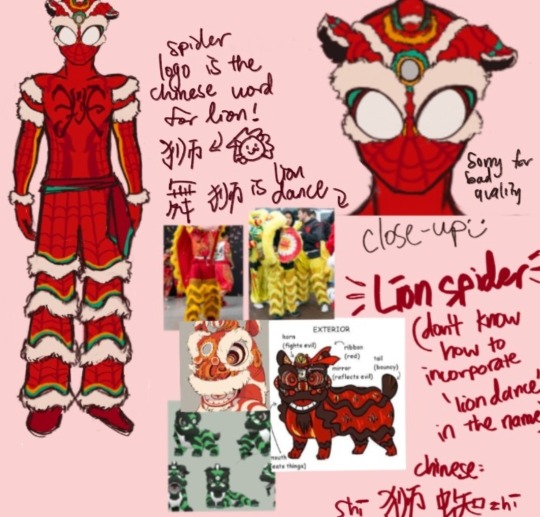
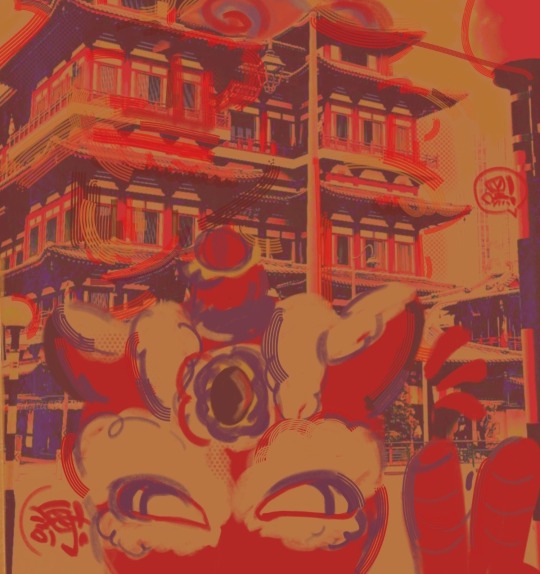
AOUGH okay I ended up typing some info I thought of the past few days. I still haven't settled on his name becuz he's a self insert and I want to name him Wren but I also want to name him something that has more of the character's essence...
Pre spider bite:
He introduces that (though he's Chinese,) he sucks at studying, he can't play instruments and he's not even athletic. He's introverted, likes animals and he likes to draw (Becuz he's basically me) and tries to find and draw them around the city. He tried to join a lion troupe/the club in his school but got rejected cuz he's essentially talentless for them 😭
On the way home he spots a poster at a shophouse for those who are interested in making lion heads to go upstairs. He ends up learning from the old man there, and enjoying it a lot as it's a way to give life to the art form without participating in the performances itself.
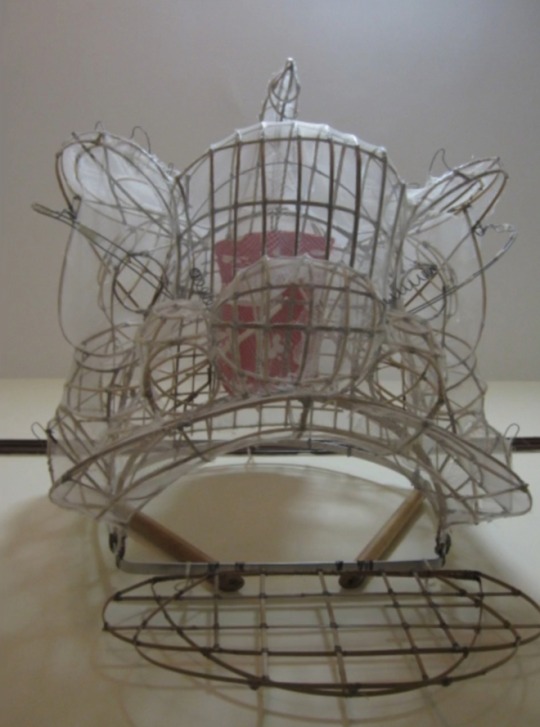
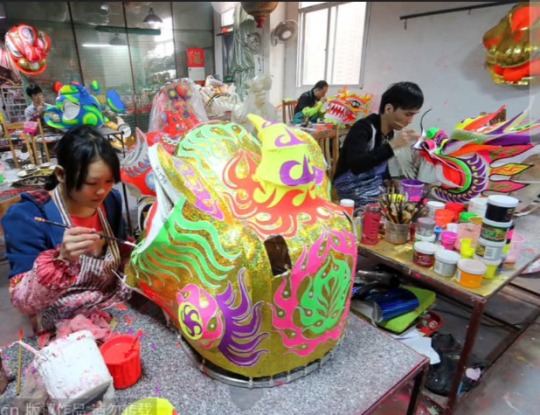
His city & some characters
It's modern and urban and has lots of Chinese and other Southeast Asian architecture. It's sorta based on Singapore too which is where the building in the second drawing above is from anyway. Imagine a spiderverse world with lots of shophouses, pagodas, temples, mosques.. They're the heights of skyscrapers. There are only fragmented and rare plots of nature within such a city.
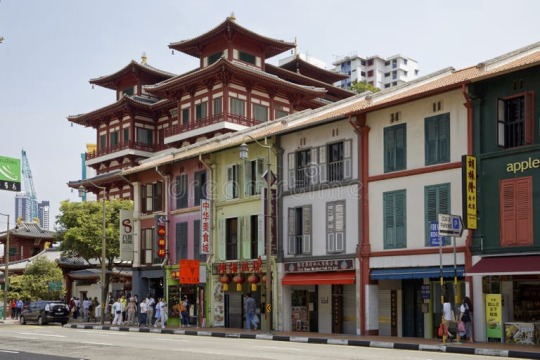

Animals are rare, more common are mythologised ones such as the Chinese guardian lions, and the Naga and Garuda in Hindu and Buddhist mythology, which is what he mentions in his introduction without knowing some of the villians he'll face later are based off these figures. The lions can shift forms between sand and stone, the Naga figure is doc ock and the Garuda green goblin. Yes in mythology they're not evil and that's why they're probably working for alchemax and kingpin before becoming allies later (at least the lions becuz... Kitty...) but I haven't figured it all out yet...
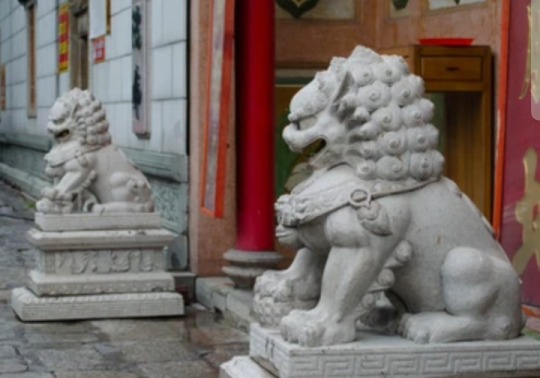
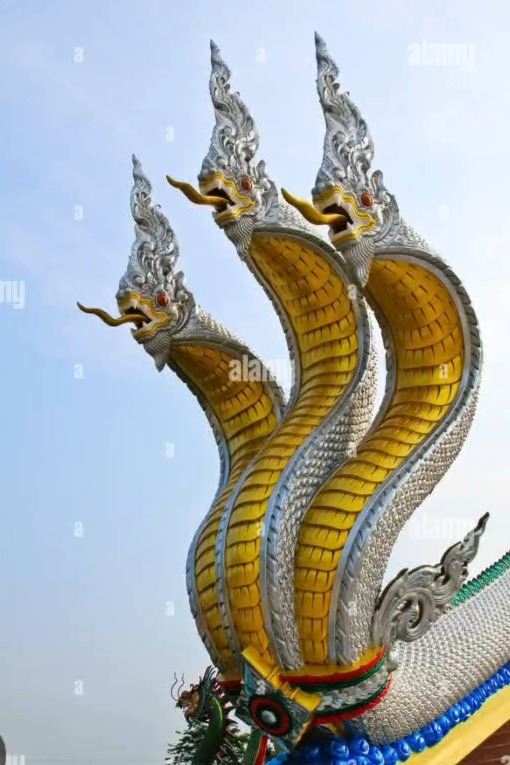
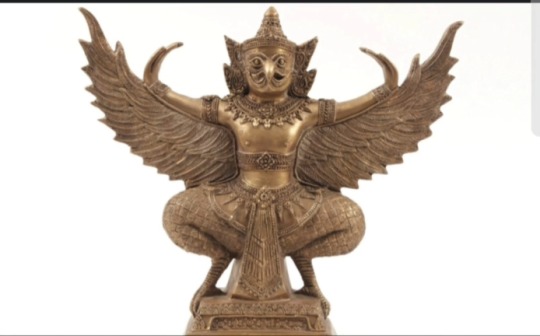
His friend organises shadow puppetry performances twice weekly at a community theatre. This friend later becomes black cat but lion spider doesn't know that at first.
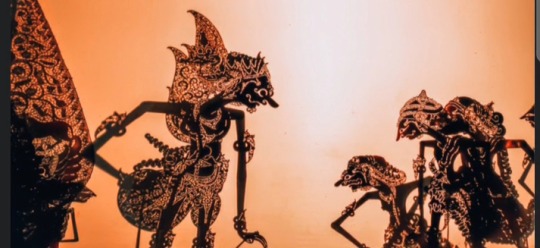
The shows are very popular and of their shows the most popular is the one of Spider-man, a hero who is bitten by a spider. ...... He always joked it was silly but when it happened to him... 😐
Lion spider
The lion dance head shophouse was next to alchemax I suppose. Their spider escaped and made webs in the heads and alchemax sent a bad guy to find it. Except it already bitten lion spider days before. So uh I think the mentor guy got killed (uncle Ben moment) and lion spider fought back by wearing the lion dance head and beat him with his newfound strength. It felt nice to take the form of lion dance and he gained a confidence in doing so. So he decided to incorporate it into the spider-man figure from then on.
It's also good that he didnr officially join any troupe becuz I think lion dance is kind of a big thing in their city and many troupes compete annually in some lion dance competition. And everyone was like ooook whichever troupe member is absent is lion spider. And then all the members were there. while a villian showed up during the crowded competition and lion spider was also there.
He took one of the heads among the chaos and gave a performance defeating the villian yay! The sad thing is he never really got to dance with a partner. Although he knows the steps he only ever practiced on his own.
the ATSV friends + kiawren
This universe has no Kiawe but he eventually makes friends with the Spiderverse characters (not Miguel he also doesn't like him) and hangs out with them. I guess he's a part of spider society but pretends not to know about the seriousness of the canon stuff (Hobie told him about it) and just isnt there in the drama like how Pavitr wasn't.
There's a Kiawe spider-man!! I did draw a bit of his vague design I had in mind before. (which is inspired by polynesian face tattoos and his role as a fire dancer like his original character)
They have a milesgwen romance except not the narrative angst. They bond over their traditional dances and being trans guys. THERE'S A LOT. OF PINING. The yearning to visit each other, the wondering how they're doing in their daily lives in their respective worlds, wanting to show them something in theirs, THE FIRST TIME THEY SAW EACH OTHER'S FACE.
Kiawe isn't really in the friend group, he just spends time with lion spider. So when the latter is with the atsv friend group they keep teasing him and trying to match them on spider society missions.
Also, Kiawe's world has a lot of natural wonders (Volcanoes, oceans, forests) and lion spider loves it so much he sorta tears up seeing it the first time he visits becuz his world doesn't have these things.
#REALLY appreciate if anyone read all that 😭#Lion spider#<- go through this tag for the other stuff I've posted about him I guess? Though there isn't much I'm sorry 😭#Spidersona
12 notes
·
View notes
Text
Malaysia/Singapore, 1921
On a dark, rainy night, Singapore finds himself in desperate need of a warm meal and a bright smile. Luckily, he has someone who cares for him very much.
Originally intended to be part of a Hetalia fan anthology, however I missed the deadline long ago. You can find it at @hwsrazzledazzle . This is my first time writing Malaysia and Singapore, so I hope I've done them justice. Please enjoy! If anyone notices inconsistencies or cultural mistakes, please let me know and I'll fix them right away.

December Rain
Singapore; 16 December 1921
“Governor, is there really no other way? We are in peacetime, so surely-”
“Unfortunately, this is the way it must be. Perhaps if relations between London and Tokyo improve, then these restrictions may be lifted. But from what I understand, it is unlikely that either of us will witness such a thing happen in the near future.”
“...I see.”
“I know this is all rather irregular, but even so, I trust you will follow these new regulations once they come into effect. Won’t you, Singapore?”
“Yes, Governor Guillemard, of course.”
“Good. Very good! I had the sense when we first met that we would get along well. That you were an honourable, hard-working young man – or colony, I should say – and that you would cause no trouble. I’m delighted to see that is still the case.”
—
A torrent of water falls from the heavens in rippling sheets. People dart about, some on bicycle and some on foot. They splash through the wide puddles of the civic district, anxious to be home before the dark night sets in. The lucky ones squeeze onboard the bustling electric tram with their elbows and umbrellas poking through the open windows. Unfortunately, Singapore was not one of those lucky ones today.
Clasping his cold hands together, Singapore rubs his knuckles. He huddles in the seat of his hired rickshaw, grimacing at his situation. The spats covering his shoes are terribly soggy and the rain has soaked his grey trousers up to the thigh. He leans back in his seat, sheltering beneath the rickshaw’s canopy, hopelessly trying to stay as dry as possible. Normally it wouldn't be an issue, but tonight... Malaya is visiting for dinner. It’s the first date they’ve had in months.
There is a tightness behind his ribs and Singapore takes a steadying breath. He needs to dispel the stress of the business day and the terrible news he was given.
None of that matters at the moment. Even though his disheartening meeting with the Governor went on for much longer than expected, he should still make it home before Malaya arrives, because that silly oyen is often late himself. And to the rickshaw puller’s credit, they are speeding down the muddy streets.
Eventually, Singapore’s abode reveals itself wedged amongst a long row of shophouses. The vehicle’s rickety wheels slow to a halt and the rickshaw man glances back expectantly. Quickly, Singapore tosses a few coins his way. Then, he hops out of his seat, over the gate, and dashes through the five-foot way.
He pushes open the wooden door to his house and pauses, holding his breath. The darkened front hall is quiet and none of the oil lamps appear lit. Thank goodness. Tension floods from his shoulders and he releases a sigh.
He slips off his shoes and carries them inside, hoping to wipe the leather dry and preserve his valuable Oxfords. His bare feet tap terracotta tiles as he pads through the front office, then the smell of firewood hits him, mingled with the aroma of red chili and garlic. Peeking into the hallway, he sees dim light and steam emanating from the kitchen in the back.
His hairs stand on end and a second later he’s bursting into the warm room.
“Why are you here so early?!” Singapore demands.
Malaya flinches and glances up from the stove. “Oh, you’re here!” A bright smile blooms across his face, putting his crooked fang tooth on full display. “Welcome back!”
“You’re never early! How did…?”
“Ah? I thought I was late. You said we would meet in the afternoon.”
“No, we said it would be in the evening.”
“Oh, that makes sense,” Malaya chuckles. “I thought it was strange when I walked in and nobody was home.”
“Wait, what are you doing?”
“What does it look like I’m doing? I’m making dinner!”
“But I was going to....” Singapore’s words fail him as he gawks at his kitchen. The mortar is smudged with trace remains of crimson spices and his stove is lit with the smoky haze of burning charcoal. Malaya tosses peppers into the wok and effortlessly works the sizzling heat like he was born for it. Singapore sighs. “Never mind. Let me take over from here.”
Malaya laughs incredulously. “But I’m almost finished!”
“It doesn’t matter. This is your first time in my new home! You’re my guest.”
Malaya quirks an eyebrow and gestures to Singapore with the backend of his chuan. “Singa, you’re dripping wet. You’ll get rainwater in our food.”
Baulking, Singapore looks himself over. His suit is darkened and heavy, leaking droplets onto the floor.
Grimacing, he deflates. “...I’m sorry.”
“Ah? You don’t need to apologise.”
“No, I should have arrived earlier. I had plans for our dinner together; I wanted it to be special.”
Smiling wider, Malaya seems to melt on the spot. “Sayang….”
“I can take over after I’ve changed.”
“No. This is my cooking now.”
“But–”
“It’s fine. You work too hard!” Malaya steps away from the wok and nudges Singapore out of the room. “Quick! Go change out of those clothes before the food is ready.”
Reluctantly, Singapore trudges upstairs to his bedroom, glancing back at the kitchen as he goes.
Once upstairs, he takes a moment to tend to his Oxfords, the higher priority, before his own comfort. When he’s satisfied that the leather is dry enough, he peels off his wet business attire, shivering despite the humidity, and then towels his damp skin. Throwing on something clean, he pauses in front of a small mirror to tame his dark hair before returning downstairs.
The dining area is bathed in warmth and an array of dishes decorate the table. Dinner is set out before him: tomato rice with ayam masak merah, a mix of chicken and dried chilies sambal. The saucy red soup glistens in the lamplight and Singapore’s belly rumbles. Malaya snickers, placing the finishing touches on the table and telling him to dig in.
With a flush rising to his cheeks, Singapore thanks his companion and relents. He takes a bite of the chicken, and a burst of rich, creamy, spice hits his tongue. It’s so delicious that he sighs, the flavour bringing back memories of other rainy Decembers, long past. When it was just the two of them, huddled beneath a small, thatched roof.
“Abang, it’s so good,” Singapore says. “Thank you.”
“Anytime!” A wide grin graces Malaya’s face as he produces a gorgeous bottle of tapai rice wine and pours both of them a healthy glass. Then he sits as well, going for his tomato rice, and talking unabashedly between massive mouthfuls of food. “You know, I think your last house was better.”
Singapore pouts. “Don’t say that, lah. I was hoping you would like it here.”
“Well, ah… it’s not what I was expecting.”
“I was able to get this because my markets have been paying well. Would you prefer it if I returned to a timber attap house? Go back to my old kampong?”
Malaya sheepishly raises his hands in mock surrender. “No! It’s just very… different?”
“It’s closer to the city centre. And it’s modern.”
“Okay, okay! I’m sorry.” Malaya leans in and gives Singapore a quick kiss on the cheek – an apology. He leaves behind a few sticky grains of rice, and Singapore rolls his eyes before brushing them off. “You worked very hard for this, so I’ll admit, for a city house, it is really spacious and fancy.”
Singapore swallows a few more bites of food while considering his companion’s sentiment.
Indeed, the new dwelling takes some getting used to. Bought last July, Singapore’s abode stands three stories tall and has an elaborate, ornamental façade. Decorated with colourful tiles and plasterwork, it is more stylish than his previous place. If only the floors were worn in, and the rooms smelled of the forest, perhaps then this mass-produced building would feel more like a home.
It’s no matter, though. He will adjust. As if reading his mind, Malaya pokes his elbow and gestures to the open courtyard. “Plant a garden in the spring; that will help.”
Singapore glances at the bare space and imagines it filled with kang kong, lemongrass, and chili plants. It warms his heart.
“That would be nice.”
Malaya polishes off his rice and sets the bowl down. “So, you meet with Guillemard today?”
“Ah… that’s right.”
“Mm! I’m meeting with him in a few days, too. What did he say?”
Singapore ducks, suddenly very interested in the wood grain of his table. “I’ll tell you after dinner.”
“Come on, tell me. Is it good news?”
Weight settles on Singapore’s shoulders and bears down on his neck. “No, it’s bad.”
“Now I have to know!”
Singapore sighs. The locks in the back of his mind slowly release, allowing a bitter slurry of unease and gloom to trickle forth. He’s been holding onto this all day and he was never good at hiding things from his dearest.
“You’re not going to like it.”
Malaya downs a swig of rice wine. “I’m ready whenever you are.”
Singapore follows his lead, taking a sip from his own cup and allowing the burn to roll down his throat. He swallows, and means to slam the cup down, but it settles with a skittering series of taps. Is he nervous, or just upset?
“Guillemard said… beginning next week, we cannot have any contact with Taiwan, Korea, or any other kingdoms under Japan’s control.”
The statement falls wet out of his heart to splatter ruin onto his new, tile floor. Malaya blinks, silent for a while, his eyes going wide.
“No, that can’t be right.”
“Personal contact lah,” Singapore clarifies. “We can’t send them letters, telegrams, or schedule any visits.”
“Not even letters?”
“None.”
Malaya gapes. “Why would he say that? Did he have a reason?”
“I couldn’t get all the details.” The morning and afternoon were like a whirlwind. Questions flew around the rooms of the Governor’s estate, from not just himself, but even the groundskeepers who he caught whispering in the halls. “I heard there was a conference,” Singapore continues, “and a treaty was signed. Somehow, this new treaty ended the alliance between England and Japan, but it was more than that. Apparently, there has been tension between them for a long time, maybe years. So, it is possible… perhaps a combination of different things ....”
“Wait, wait!” Malaya cries, jolting Singapore out of his recollection. “Tahun Baru Cina!”
It takes Singapore a moment to understand. “What about it?”
“Taiwan invited us to celebrate with her. You remember; we were meant to visit her in that city... what are we calling it these days?”
“Taihoku?”
“That’s it!”
“I’m guessing that will be cancelled.”
Malaya releases a puff of air. “They can’t just cancel the New Year!” He slumps, staring forlornly at his empty rice bowl. He looks like a cat, longing for more food, as though that would be enough to fix all the problems of the world.
“Someone else might host,” Singapore suggests.
“This is terrible,” Malaya mutters.
Singapore frowns at his wine, cloudy and glistening in the lamplight. He imagines it reflecting a sea of red lanterns as they ripple in the night air, a dream of years past. If he concentrates, he can recall the clamour of jubilant voices, the thrum of drums, and the crackle of firecrackers.
Gathering under one roof to welcome the New Year was a tradition they shared. Who started it and when, Singapore does not know, but every house he visited would be brilliantly decorated in a rainbow of colours, and every table would be packed to the edge with food. Different people would host and attend each year; a variety of familiar faces that came and went. Philippines, Vietnam, Siam, Manchuria, Korea, of course China, and more. Sometimes there were so many of them, there were not enough seats to go around!
Occasionally, the turnout was smaller due to war, famine, or sickness, but it was always a pity when it happened. It’s still a pity now. Singapore sighs, again. “I’m sorry for ruining the evening with depressing news. This date was meant to be special.”
Malaya blinks, returning to life, and shushes him. “You know, if you keep stressing out, your hair will turn white.”
Something in Singapore's face must be betraying his feelings, because Malaya’s smile falls almost as quickly as it appears. He shuffles closer and secures a steady arm around his lover’s shoulders.
“Abang….”
Rain pitter-patters on the courtyard stone. The distant sounds of city life grow quieter as night falls. Is it raining in Taihoku as well? Is there a little girl on the other side of the sea mulling over the same sad news? Poor Taiwan. She’s still just a child; she won’t understand.
A knot has lodged itself in Singapore’s throat. Times like these serve as a potent reminder: it is the spiderwebs of alliances that shape their uncertain destinies. Of course, he is not a revolutionist. Order, harmony, and life are too precious to him. All he must do is keep his head down, work hard, and if he does that, he can get by. But sometimes… sometimes….
Without prompting, Malaya whispers, “I know,” and hugs him, lean muscle cradling Singapore’s thin frame. And Singapore doesn’t realise he is clenching his jaw until Malaya strokes his cheek and it slackens. Heat radiates through his ribs like an antidote. A rattling breath escapes his chest and his eyes fall shut. Their bodies slope together.
They stay that way for long minutes. The weariness of the day begins to levy its toll on Singapore’s consciousness and his head droops. Safe in his companion’s arms, sleep tempts him. He almost doesn’t hear when Malaya whispers: “When do these rules start?”
“Next week,” Singapore murmurs.
Malaya’s lips press gently to his temple. “Then we will send Taiwan and the others some letters. We will wish them an early Happy New Year, before these awful new rules take effect.”
Shifting, Singapore meets his brilliant golden eyes. Dark umber bangs brush the tips of his eyelashes and a firecracker lights in his heart. His oyen is so handsome. They kiss and Malaya’s inviting mouth tastes faintly of chilies.
“Can I stay with you for more than a few days?” Malaya whispers.
“Of course,” Singapore says. “But is that okay? Won’t you get in trouble with the sultans?”
With a wave of his hand, Malaya dismisses the notion. “I’ll just keep begging my bosses until I manage to annoy them into letting me stay. Besides, my sayang is worth it.” A smile dawns on Singapore’s features and they entwine their fingers. Malaya nuzzles his hair. “And after I go, I'll come back in the spring to help you build your garden. We can plant some red hibiscus together.”
“...That would be nice.”
Suddenly, Malaya squeezes him tight and peppers his face with kisses until he’s laughing. And the spark in his heart becomes a booming firework display, so bright and colourful that it threatens to burst from his soul.
Eventually, Singapore has to push him away, before things get heated and they make a mess of both their clothes and the dining table. He suspects there are red chili smears decorating his face. Malaya relents only after leaving a suggestive bite to his neck, practically purring with delight.
They gather up the dishes from the table, and as Singapore follows his companion back to the kitchen, he finds he is able to stand straighter. Malaya has a kind of resilience, a living strength that courses along the lines of his shoulders and blooms in the curve of his toothy smile. And Singapore has always found it captivating. Despite their misfortune and the struggle of navigating life, his oyen thrives and endures. How lucky he is to share delicious dinners and squander time with this special person.
Singapore’s thoughts drift to the feathery bed that beckons them both and suppresses a shiver of excitement. Hurriedly, he plunges a bowl into the water basin and scrubs it clean, eager to indulge in the rest of their evening and the precious days ahead.
As long as he has Malaya, everything will be okay.
End / Fin
~~~
Author’s Notes
Laurence Guillemard was the British-appointed “Governor of the Straits Settlements” and “High Commissioner for the Federated Malay States” from 1920 – 1927.
“Abang” and “sayang” are Malay terms of endearment.
Malaya/Malaysia’s national animal is a tiger, which is why Singapore calls him “oyen,” meaning: orange cat.
The first Singaporean shophouses were built starting in the 1840s, under the original ordinances laid down by Sir Stamford Raffles. Over the years, architecture styles changed but the houses remained popular until the 1960s. They are now considered important heritage pieces and are valued as historic examples of architecture.
An attap house is a traditional dwelling made with attap palms, which provide wattle for the walls and leaves for their thatched roofs. They are often found in kampongs (traditional villages) throughout South East Asia.
The Anglo-Japanese Alliance was a pact between the British and Japanese that was signed in 1902. Both parties benefited in various ways, including defensive strategies, trade, and cultural exchanges. However, over the following decades, the relationship would slowly deteriorate. It was viewed as an obstacle at the Paris Peace Conference following WW1, and then battered further by the 1921 Imperial Conference. It finally dissolved on 13 December 1921, when the Four-Power Treaty was signed in Washington DC.
Lunar New Year! In Malaysia, the holiday’s official name is “Tahun Baru Cina”.
Taihoku was the name given to Taipei while it was under Japanese rule.
“...your hair will turn white.” It’s my personal headcanon that Singapore got his trademark streak of white hair from overworking himself in the 20th century.
#aph malaysia#aph singapore#hws malaysia#hws singapore#historical hetalia#hetalia#hetalia fanfiction#my writing
18 notes
·
View notes
Note
hiiii, I am travelling to Singapore for the Grand Prix this year and was wondering if you had any recs of things I should do while I’m there? 🩷
helloooooo omg how fun!! I love the Singapore GP it's really fun and it's such an accessible circuit. Tbh I'm the worst person to ask because a) i love niche boring stuff b) the only things my friends and I do in Singapore is eat and hang out because that IS the national past time but let me see hmmmm
I'll just recommend some stuff that's not like. Gardens by the Bay. Sentosa. Universal Studios. The Zoo. All VERY nice places tbh and highly recommend but these are just some tiny Nadia-based reccs that you might not get from a google-able list I guess?? If you're here for a short time and you're only at the Marina Bay Sands/CBD area that's totally fine but just know that that IS the most expensive area of Singapore.
Well if you're here for a while and you're a history person I'd recommend going to the National Museum and then right down the road from there is Peranakan Museum which is tiny but fun. The National Museum is one of my favourite buildings in Singapore I just think it's so beautiful. And if you REALLY like history and museums I'd super recommend the Asian Civilisations Museum which is criminally underrated imo. If you're staying near the circuit the National Gallery is literally right there you can even pop in in the morning before the race, there's some really good local and southeast asian art in there if that's your thing.
My personal favourite place to have a wander is the Botanic Gardens. If you're a picnic person just grab some bits and bobs from Cluny Court (Plain Vanilla cupcakes are soooo good. And there's another really good bakery on the second floor) and have a nice picnic and stroll in the garden. It's pretty massive so make sure you know what you're getting into. Do NOT go on a weekend. That's crucial.
The whole Kampong Glame/Arab Street/Haji Lane is a vibe 100%. Get some boba from PlayMade, get some teh sarbat from the old man that's been serving tea there forever. There's this really good burger place like right near the mosque it's called Mahmud's Tandoor I'm obsessed with it. DO NOT let the Turkish restaurants hassle you be strong! There's some thrift stores there too but it's mostly like really good food, really nice art. The Malay Cultural Centre is like a really nice space too if you need a break.
If you want local food I'd rather you go to Maxwell's then Lau Pa Sat I actually HATE Lau Pa Sat it's theeee definition of a tourist trap. Newton Food Centre which is where they filmed that scene in Crazy Rich Asians is like fine too if you're looking for local food. If you want LOCAL LOCAL come to Al Azhar at Bukit Timah because I'm literally telling people that the steamboat fish that's there is Michellin star good. That's also a good frog porridge place down the road if you're feeling adventurous.
And my last recc is the Tiong Bahru area which is the area I used to work at. If you want cute little souvenirs or local bits and bobs there's a very cute store called Cat Socrates that I buy everything from. The Plain Vanilla there is also BEAUTIFUL it's my favourite cafe to work at. There's also like beautiful street art all along the whole area so it's just nice to walk around cause it's all just nice shophouses and art. And then there's Tiong Bahru Market which has some of the best local food. Go in the morning for this.
If you want like fancy food recs that aren't local food but are like actually good and not a scam, my personal favs are Miznon on Stanley Street, Ms Maria and Mr Singh, Five Oars Coffee Roasters on Upper East Coast. Oooh if you go to Neptune on East Coast Road you can see the pretty Peranakan buildings.
UHM YEAH! Singapore is really beautiful but VERY warm please bring sunscreen. PLEASEEEE venture outside the circuit area if you have the time because while that area is gorgeous I just think places like Haji Lane, or Tiong Bahru, or Bukit Timah, or East Coast Road are just so much more local. (Any Singaporeans reading this you know what I mean la. Nice Local. I'm not gonna recommend them to go to the coffee shop downstairs your house k)
#and don't eat rice with a fork that's really strange#I hope this is at all helpful??? if you want like more specific things/areas let me know or you can DM or whatever hahaha#ALSO BAUKE IF YOU SEE THIS I NEED TO REPLY YOUR INSTAGRAM MESSAGE BUT THESE ARE GOOD RECCS TOO#love singapore it's very safe feel free to walk the streets at 3am. 24h Fairprice Finest at 3am is the place to be#asks
17 notes
·
View notes
Text
Conservation shophouses are historic structures that have been revitalised and conserved to maintain their unique charm and architectural significance in modern times. Many property investors turn to the conservation shophouses in Singapore as a haven for their investment portfolios, owing to their limited supply and high heritage value and with the looming economic uncertainty.
In fact, these rare and valuable landmarks have become a popular choice among private equity funds, family offices, and ultra-high-net-worth individuals both locally and abroad.
Are you interested in investing in conservation shophouses? From their historical significance to the key factors to consider, this article will outline everything you need to know about investing in the city’s conservation shophouses.
0 notes
Text
Singapore Classic
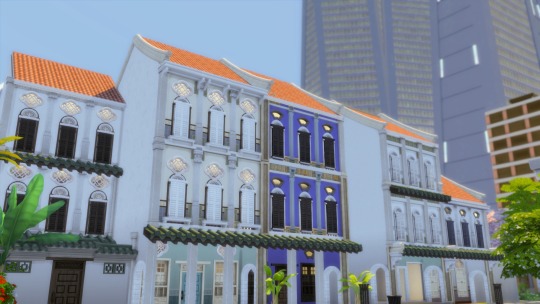
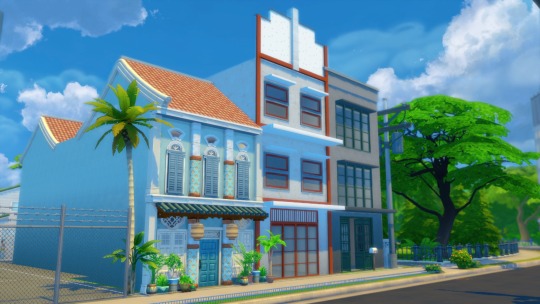
Hello! I've had a sudden whim to revisit the idea of building some shophouses, a project I first started in the Sims 2 but never finished. Given Sims 4's admittedly superior build mode, I've attempted to build some shophouses in my redone Newcrest.
15 notes
·
View notes
Photo

51Tras is a minimal cafe located in Singapore, designed by SILO. Located in the heart of Singapore, 51 Tras is a cafe and event space that is housed in a beautifully preserved conservation shophouse. It is a unique and charming location that is perfect for hosting a wide range of creative events.
24 notes
·
View notes
Text

#singapore#city#weather#romance#travel#culture#shophouse#cyberpunk#peranakan#architecture#skyscraper#streetphotography#orchard#hidden#alley#mishapwriter
15 notes
·
View notes
Text
Community Build Ideas for 2024
RESTAURANT
New England style seafood shack in Brindleton Bay
Spanish Colonial style restaurant serving Spanish/South American food in Oasis Springs
Winery-style restaurant serving Italian food in Tartosa
Eclectic restaurant serving Pan-Asian food in San Myshuno
CAFÉ
Modern, minimalistic cat café in Mt. Komorebi
Industrial-style café in San Myshuno
Multi-lot of small town Main Street-style shops in Brindleton Bay (includes a café, a bookshop and a gym)
Multi-lot complex in Tomarang, based on shophouses in Singapore’s Chinatown (includes a café, a co-working office space, a fashion boutique, a bubble tea shop and a music performance space)
Multi-lot of Wild West-style shops in Chestnut Ridge (includes a café, a bar and an office space)
GYM / SPA
Thai-style spa in Tomarang
Polynesian-style spa in Sulani
Modern wellness center in Windenburg
LIBRARY
Mid-century modern library in Oasis Springs
Polynesian-style conservationist’s office in Sulani
Victorian-style town hall in Strangerville
MUSEUM / ARTS CENTER
Desert modernism arts center in Oasis Springs featuring modern/contemporary art
Cape Cod style museum in Brindleton Bay featuring traditional/historic art
Traditional Japanese museum in Mt. Komorebi featuring Japanese art
RECREATION CENTER
French Colonial plantation-style mansion in Willow Creek
Desert modernism complex in Oasis Springs
Yacht club in Brindleton Bay
Arts-and-crafts style building in Copperdale
Repurposed industrial factory in Moonwood Mill
Rustic farm/ranch in Chestnut Ridge
5 notes
·
View notes
Text
Diaspora story rec: 1876 by freakytofu
Mature, Major Character Death, 4.4K
In every moment hunched over in the dark-room, skin sweating cold and clammy, at odds with the enclosed, muggy humidity – he cannot help but feel a swooping in his midsection every time he lifts the thin plate for inspection – as if hopeful, wanting to see something.
And then it is undoubtedly… a form, crouched. Perched, on the top of the wardrobe, leg extended mid-kick. Further back, strangely, but more… there. And his face, unmistakable, captured in monochrome – though oddly blurred, unfocused – and resolutely haunting, expression drawn up in mirth –
1876. The beginning of Bingzi year of the Fire-Rat, of the Chinese lunisolar calendar.
Lan Wangji is newly arrived to the tropical island colony of Singapore from London, the city where he had plied his trade as a photographer for years.
He does not expect to find what he does, crouched in that little shophouse.
This fic rec is part of our reclist, stories that spoke to us: MDZS fics & the Chinese diaspora experience. Reblogs are always appreciated.
7 notes
·
View notes